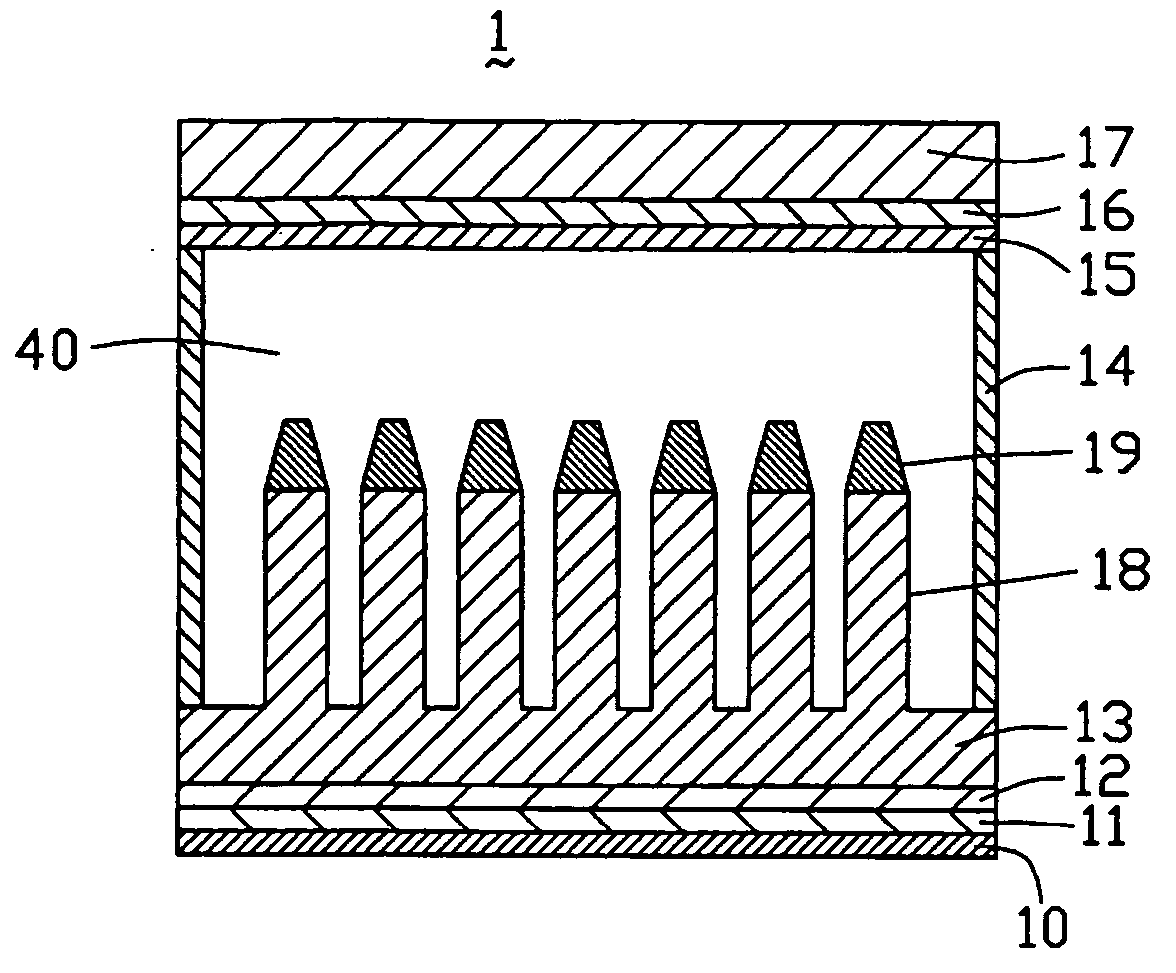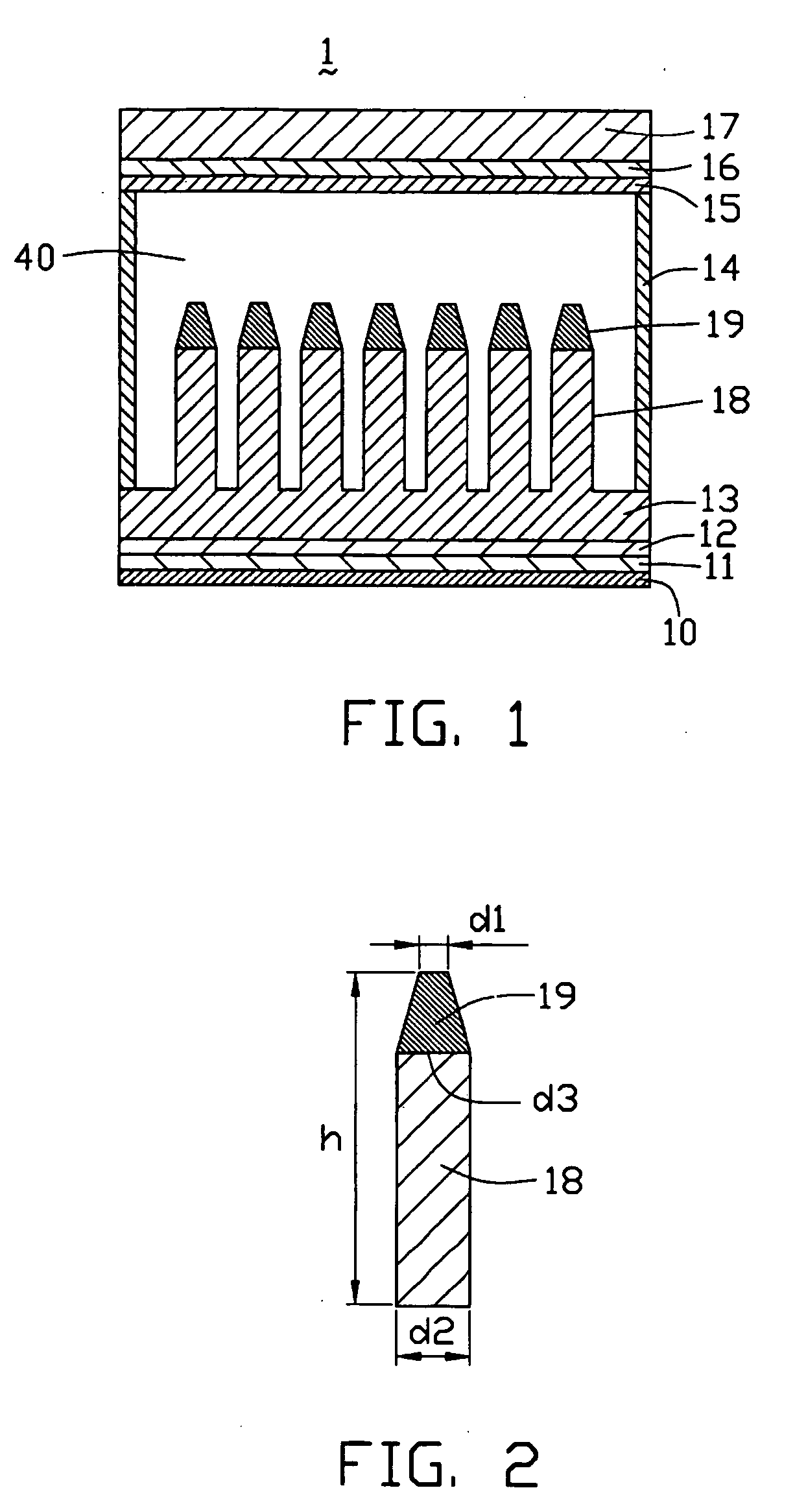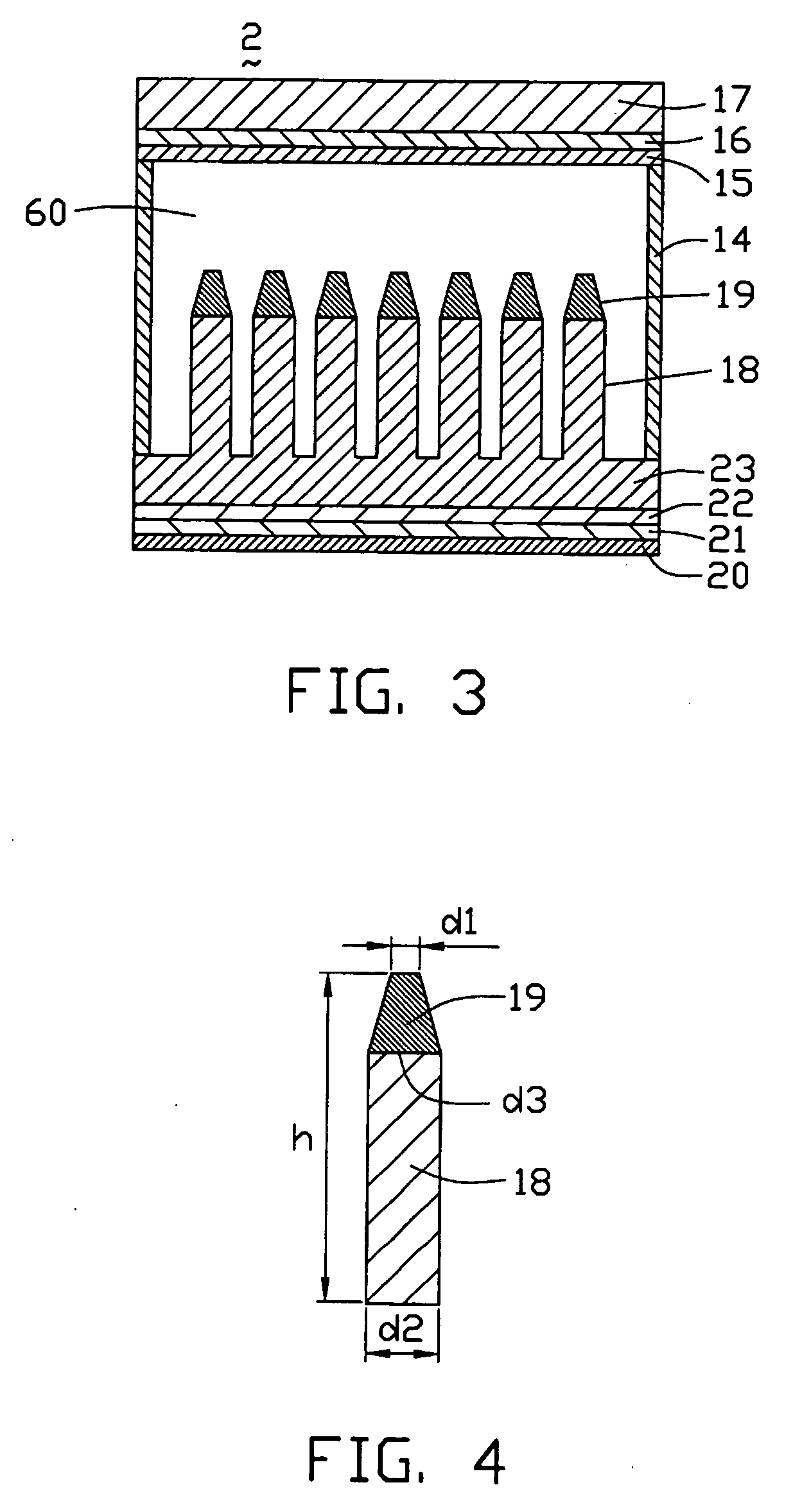Field emission lighting device
a field-emission and lighting device technology, applied in the field of electronic lighting technology, can solve problems such as virtually stalled progress, and achieve the effects of good young's modulus, good mechanical strength, and excellent field-emission capability
- Summary
- Abstract
- Description
- Claims
- Application Information
AI Technical Summary
Benefits of technology
Problems solved by technology
Method used
Image
Examples
second embodiment
[0027] Referring to FIG. 3, a second embodiment provides a lighting device 2 including a non-conductive substrate 20, a cover 21, a cathode 22, an insulation layer 23, at least one base 18, one or more niobium tips 19, a phosphor layer 15, an anode 16, a sidewall 14 and a silicon oxide (SiO2 or SiOx) layer 17.
[0028] The non-conductive substrate may be made of a material selected from the group consisting of silicon and glass. The cover 21 may serve as a nucleation layer formed on the non-conductive substrate.
[0029] The cathode 22 may be formed on the cover 21, and may be formed of an electrically conductive material selected from the group consisting of copper (Cu), silver (Ag) and gold (Au). The cathode 11 is preferably formed to have a thickness of less than 1 micrometer.
[0030] The insulation layer 23 is preferably deposited with silicon carbide (i.e., SiC), and is deposited on the cathode 22. The insulation layer 23 is deposited with, for example, the same material as the emitt...
first embodiment
[0037] In the first embodiment and second preferred embodiment, each of the niobium tips 19 may be closely combined with the emitter base 18. Because the combined niobium tips 19 and the emitter base 18 have good mechanical strength, excellent field-emission capability and good Young's modulus, the combined niobium tips 19 and the emitter base 18 can be subjected to relatively high voltage electrical fields without being damaged.
[0038] A high voltage electrical field may ensure a high current of field emission. The high current of field emission gives the lighting device a high luminosity with visible light having satisfactory brightness being obtained. Therefore the lighting device 1 and the lighting device 2 with the niobium tips 19 and the emitter base 18 may emit light having relatively high brightness. The brightness is about 10 to about 1000 times that of a comparable light emitting diode (LED) or a high intensity discharge (HID) lamp.
[0039] The lighting device of the first a...
PUM
| Property | Measurement | Unit |
|---|---|---|
| diameter | aaaaa | aaaaa |
| diameter | aaaaa | aaaaa |
| height | aaaaa | aaaaa |
Abstract
Description
Claims
Application Information
 Login to View More
Login to View More - R&D
- Intellectual Property
- Life Sciences
- Materials
- Tech Scout
- Unparalleled Data Quality
- Higher Quality Content
- 60% Fewer Hallucinations
Browse by: Latest US Patents, China's latest patents, Technical Efficacy Thesaurus, Application Domain, Technology Topic, Popular Technical Reports.
© 2025 PatSnap. All rights reserved.Legal|Privacy policy|Modern Slavery Act Transparency Statement|Sitemap|About US| Contact US: help@patsnap.com



